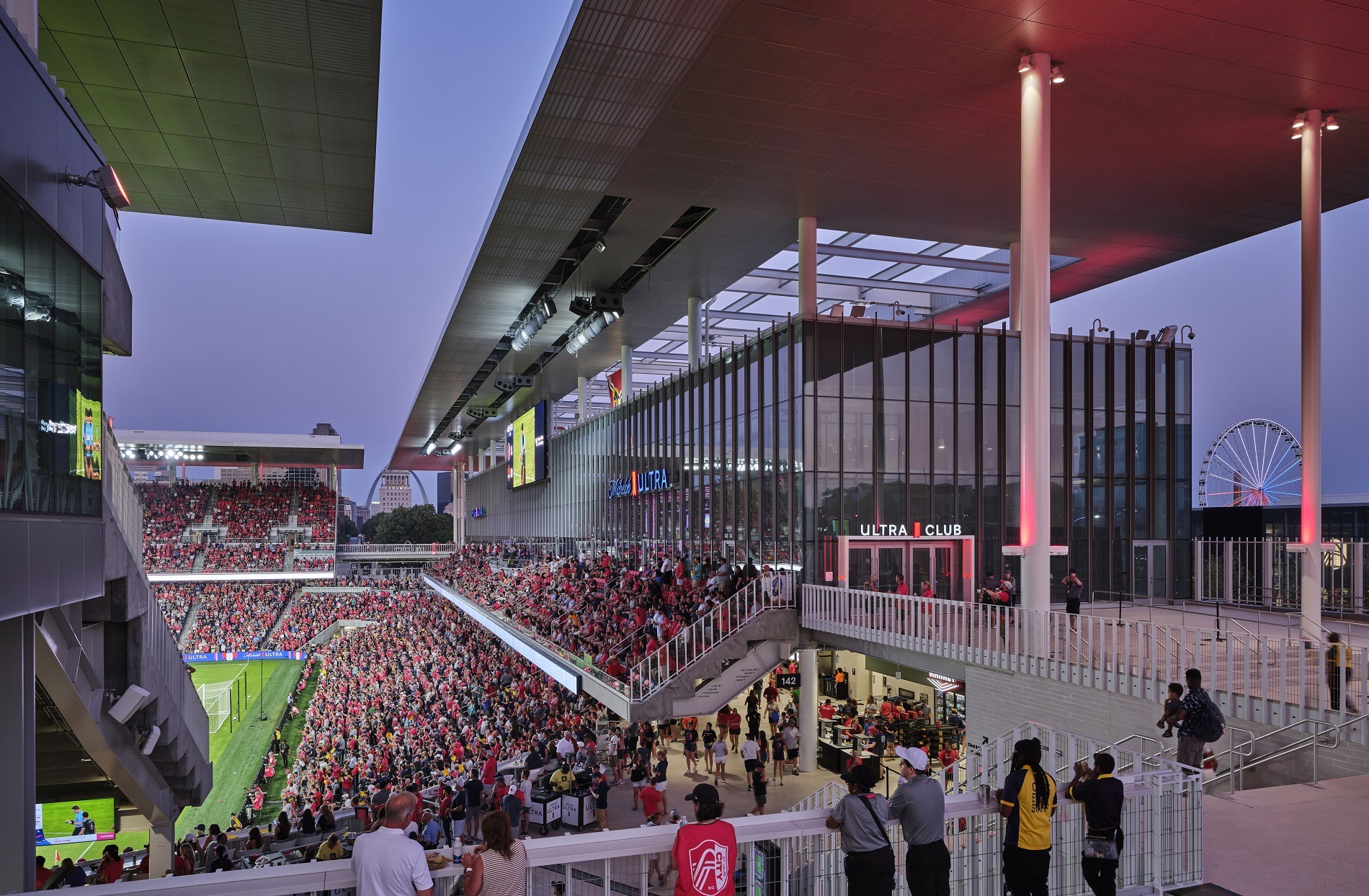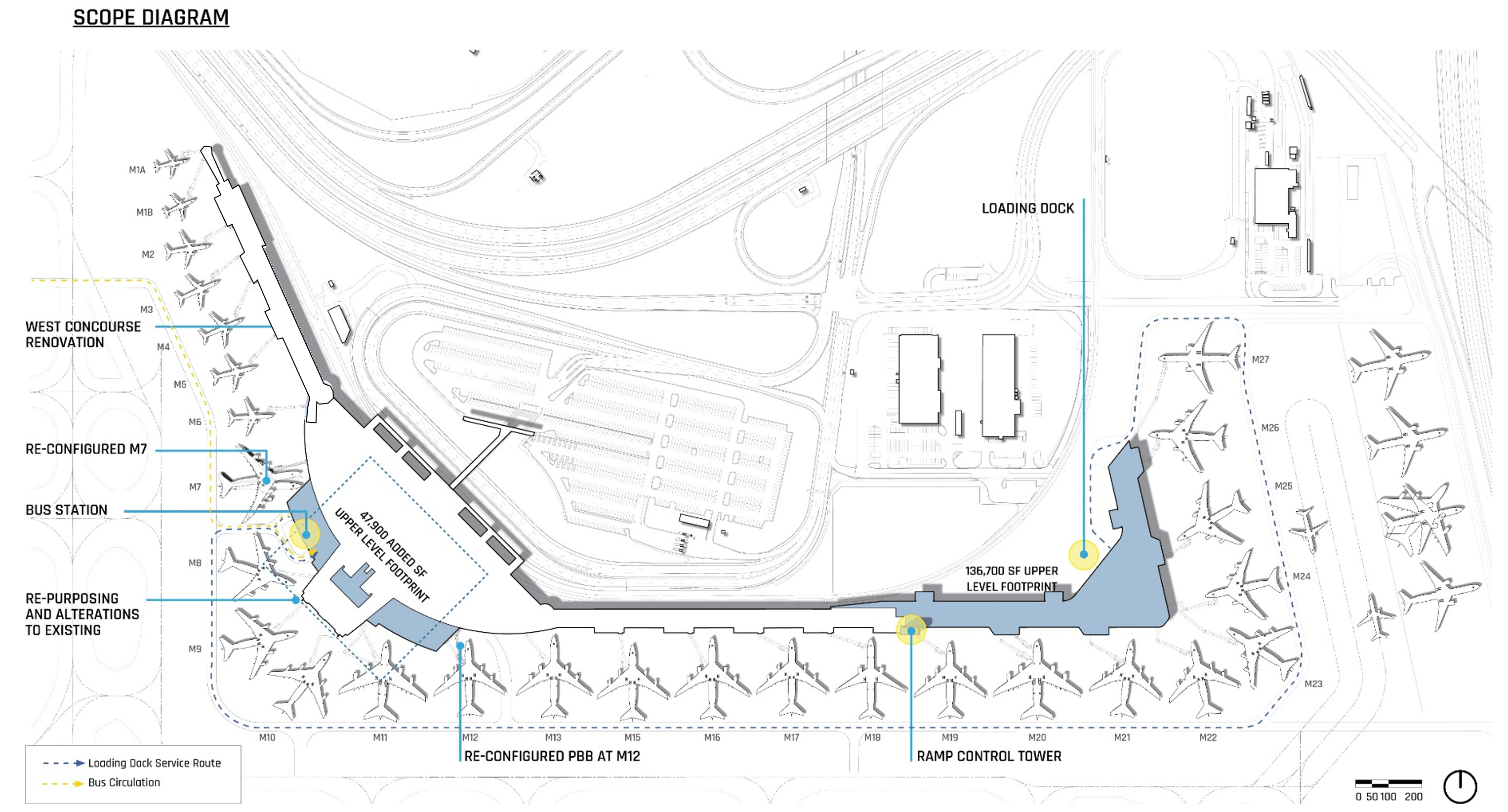
The original plans called for a linear extension from the existing building with nine gates and no amenities. Instead, HOK’s design team envisioned bending the terminal addition into a boomerang shape. This approach adds more gates and amenities, shortens walking distances for travelers and increases terminal capacity by 25%.
The project also reduces jet fuel consumption and accommodates larger, wide-body aircraft. The flexible gate design allows O’Hare to adjust from 10 wide-body gates to 15 narrow-body gates as needed.

To create a seamless traveler experience between the new and existing Terminal 5 facilities, the team designed a grand, arched space. This design pays homage to the original terminal’s vaulted architecture and features familiar elements like terrazzo flooring and a neutral white palette.
With its soaring ceilings, expansive windows and nearly column-free interior, the Terminal 5 extension is a testament to civic design. The project celebrates the spirit of a great American city.
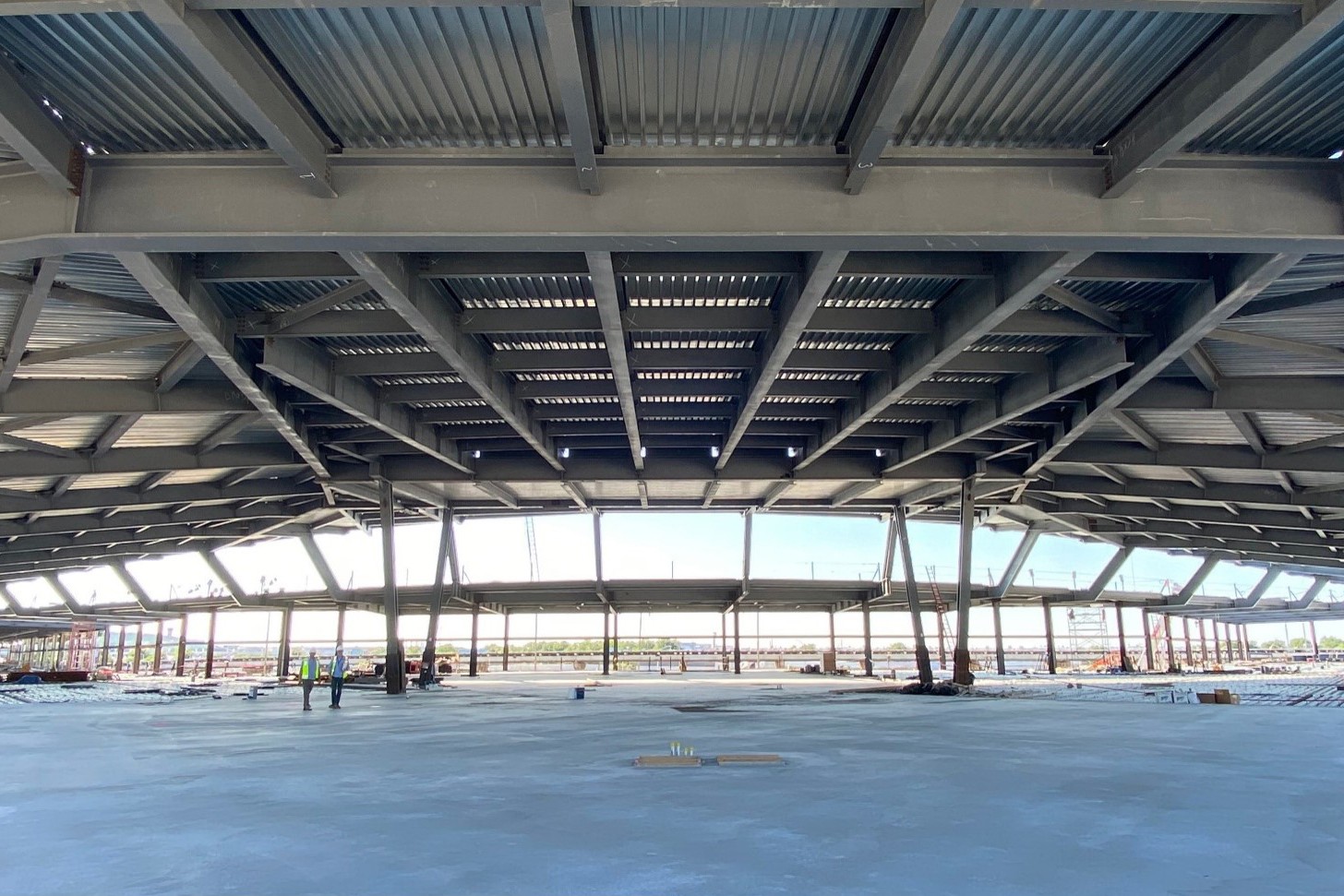
The architecture informs the structure of the terminal expansion’s structure, and the structure informs the architecture.
HOK’s engineering team designed the two-story, 46-ft.-tall concourse roof using only standard wide-flange shapes without built-up steel trusses. This approach, developed through parametric modeling, reduced fabrication and welding requirements while creating a ceiling that appears more curved than its actual structure.
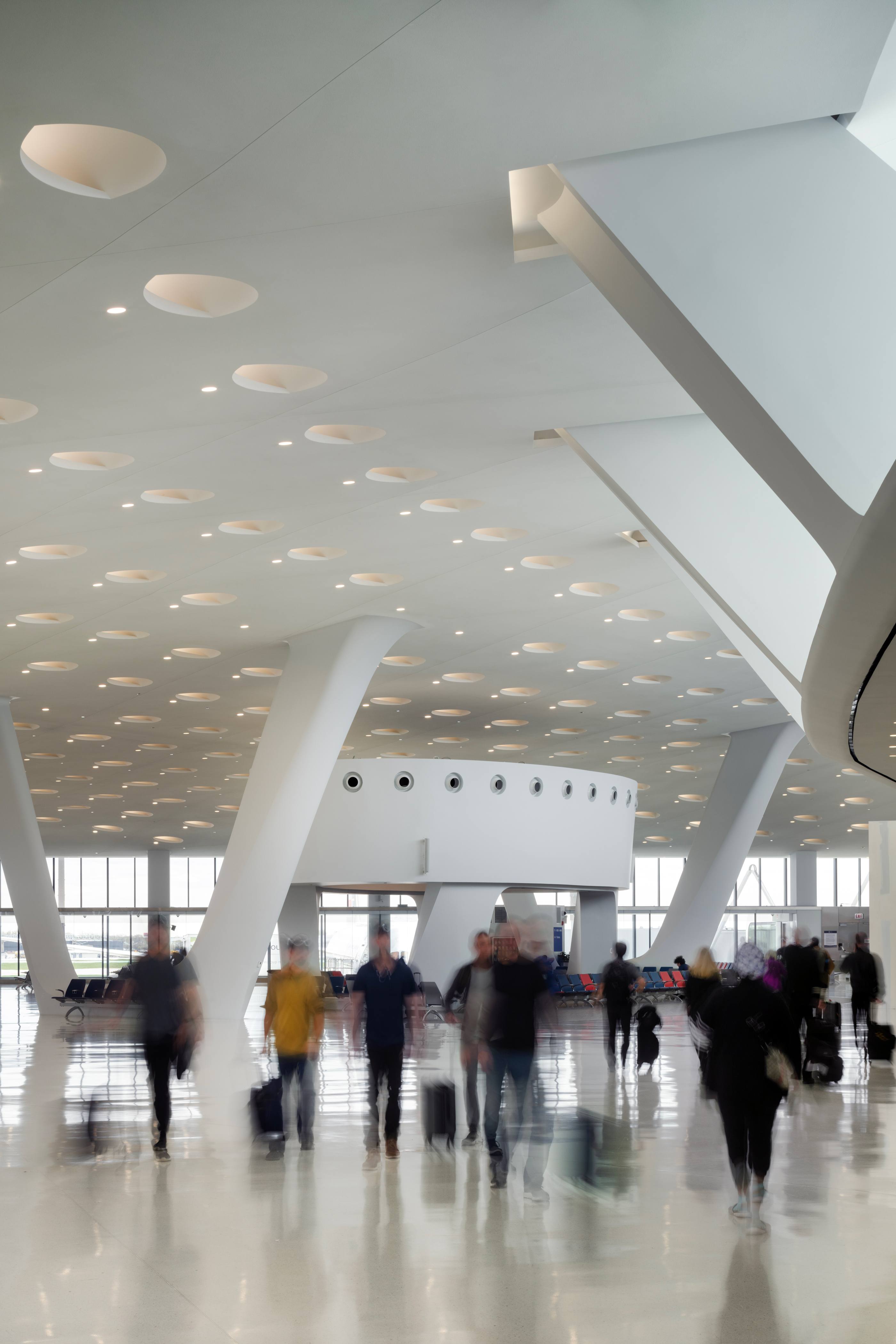
The design team wanted the expansion to showcase the joy of travel. Inspired by urban plazas, its grand central space blends lounges, gates and retail. This flexible area accommodates performances, pop-up markets and other amenities.
Seating is spread throughout, rather than clustered at gates, creating a more integrated space that showcases public architecture.
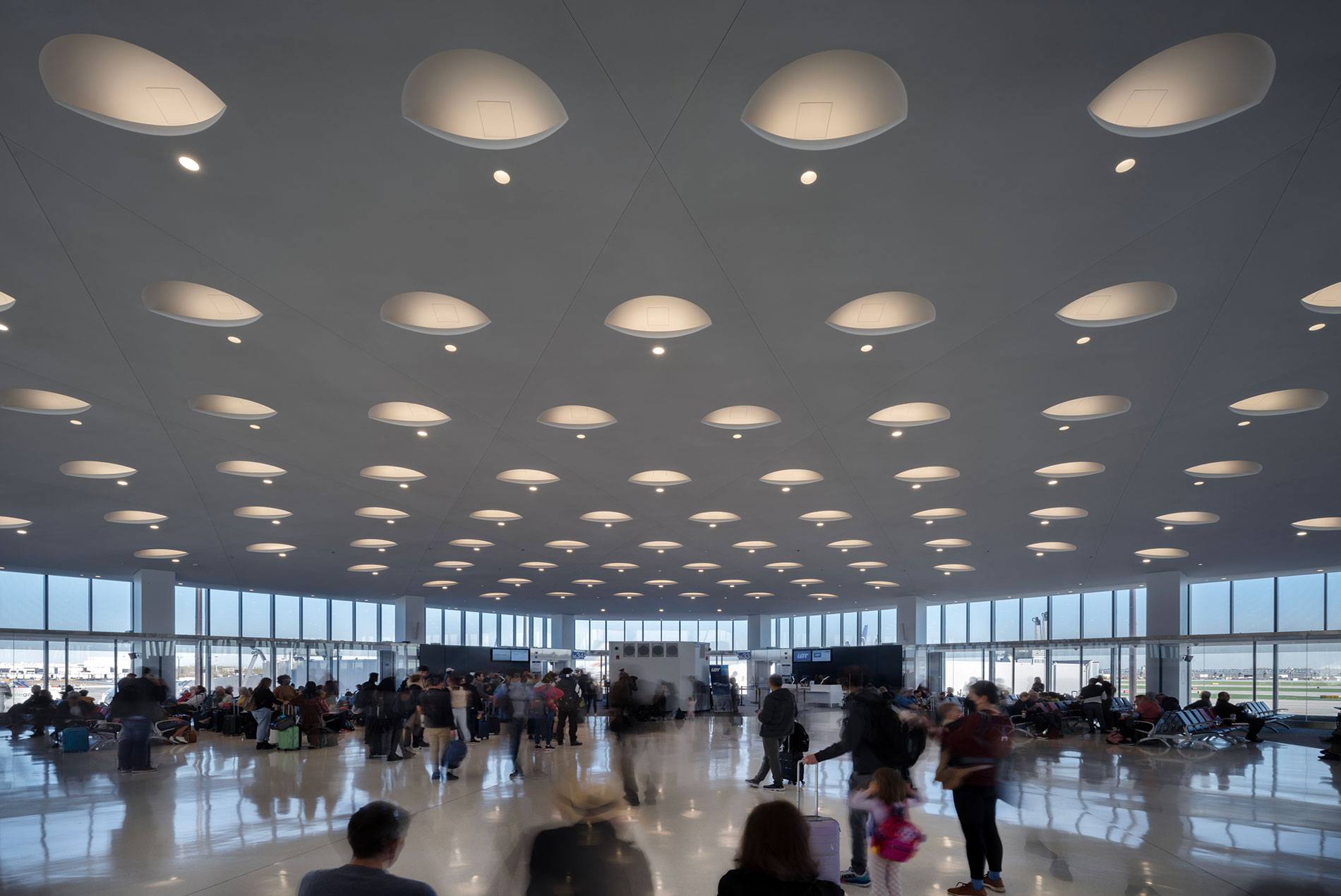
The dramatic, open space allows travelers to see clearly through the terminal, quickly spot their gate and relax before boarding.
To keep the space open and reduce visual clutter for travelers, air columns house utilities and safety equipment. This design efficiently consolidates terminal infrastructure.
Using face-level air ducts, instead of those in the vaulted ceiling, reduces energy needs for heating and cooling.
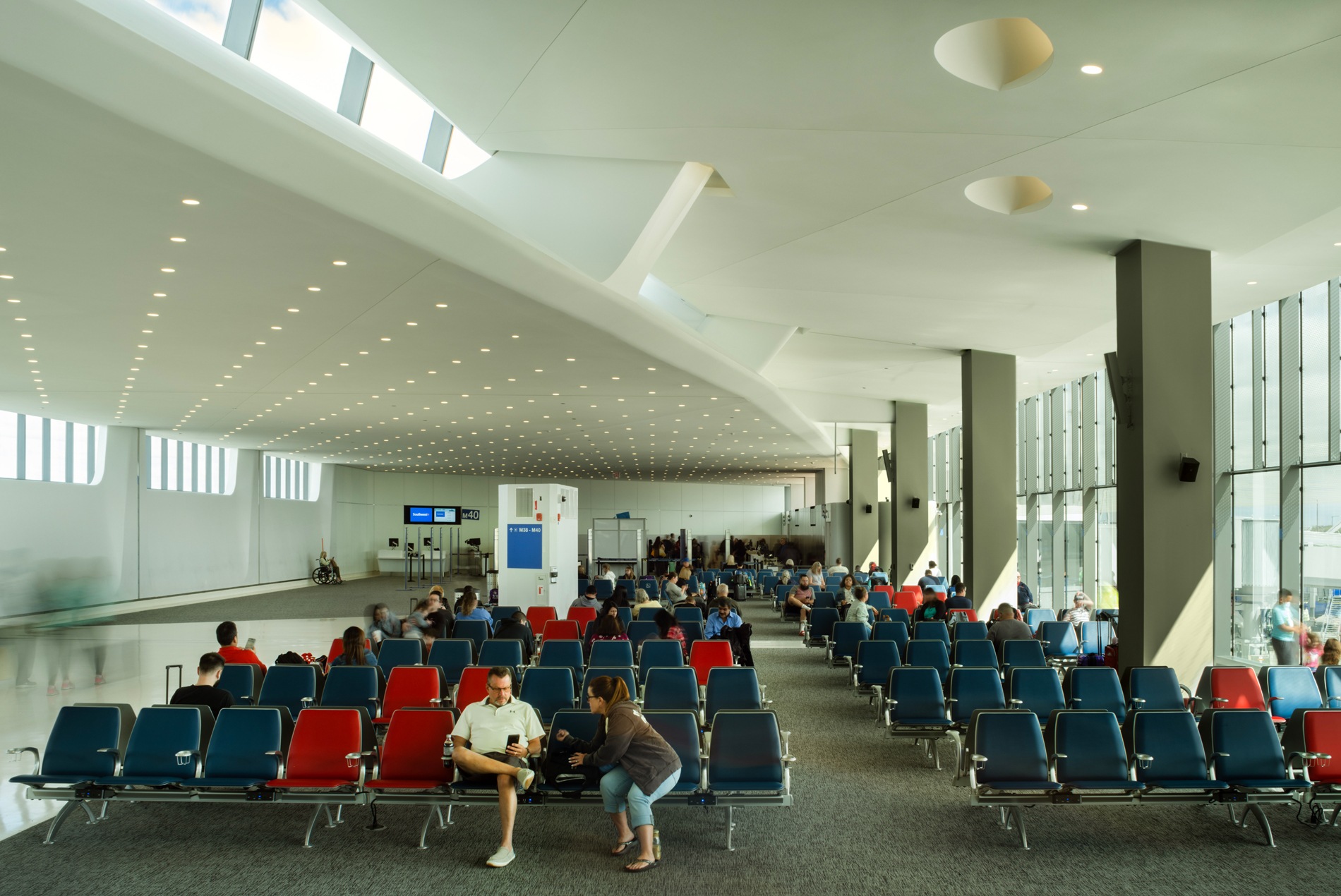
Light plays a major role in enhancing the traveler experience within the vaulted space. High-performance glass in clerestory and floor-to-ceiling windows floods the terminal with natural light, connecting passengers to the outside world. HOK’s structural engineering team worked closely with the contractor to construct the 800-ft. clerestory in the almost column-free terminal.
Soft, diffused light within the dimpled ceiling creates a unifying texture that contributes to the overall architectural pattern. Lighting systems are designed and calibrated to match circadian rhythms and work in harmony with the natural light.
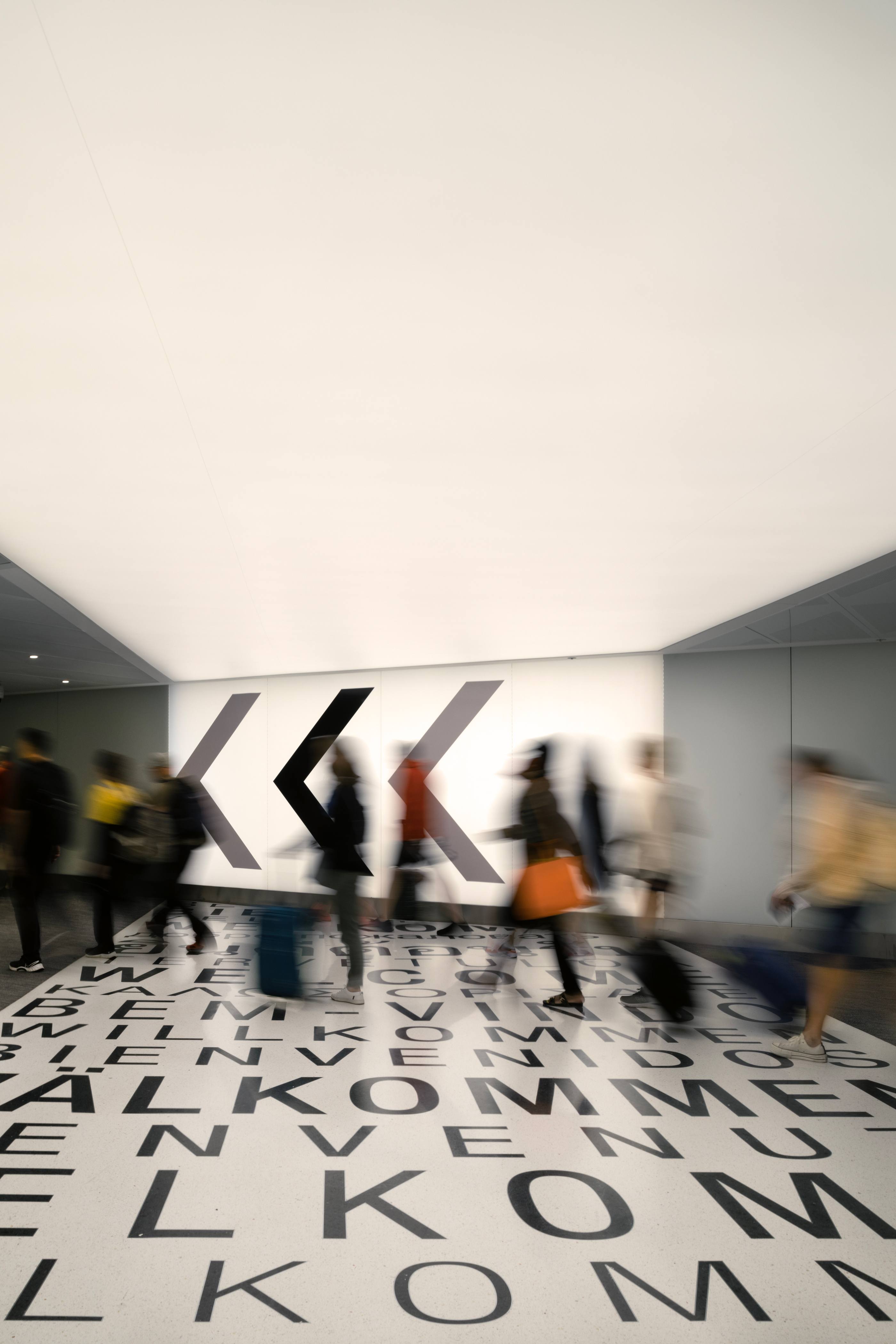
The expansion features a significant artistic element through a $3.5 million city-curated art program. This collaboration between the CDA and the Department of Cultural Affairs and Special Events marks the largest single acquisition of public art for O’Hare in a generation.
Travelers encounter a series of art installations on the arrivals and departures levels. These works showcase the talents of emerging local artists from underrepresented communities.

Beyond the passenger-facing improvements, the team designed a new 91-ft.-tall Ramp Control Tower for managing airside operations. The design optimizes the terminal’s roof depth and height to maintain clear lines of sight for the tower.
Additional improvements included modernizing and expanding the terminal’s security checkpoint, updating the immigration facilities to streamline the entry process and replacing the 25-year-old baggage handling system with a state-of-the art solution.
To minimize disruptions during construction, the team devised a temporary boarding bridge strategy that allowed gates to remain operational.


